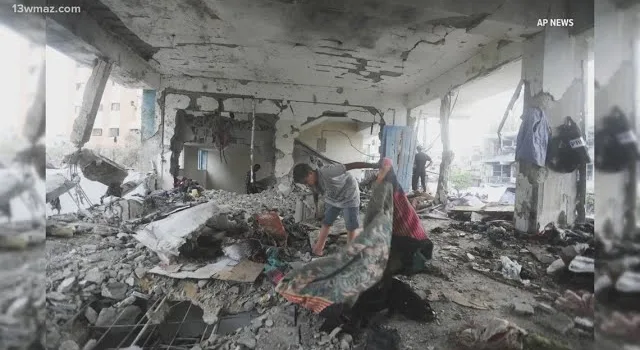Israeli military exposes identities of terrorists targeted in UN school airstrike, condemning media for failing to verify Hamas claims
The Israel Defense Forces (IDF) disclosed the identities of nine terrorists killed in a recent airstrike on a UN school in Gaza. Rear Adm. Daniel Hagari, IDF Spokesman, criticized international media for accepting Hamas claims without verifying facts. The strike, initially reported as targeting civilians, occurred amid global outrage.
Hagari revealed that the airstrike targeted Hamas’s elite Nukhba force and members of Palestinian Islamic Jihad (PIJ) who utilized the school as a base for planning attacks against Israelis. Despite media reports claiming civilian casualties, Hagari asserted that the strike aimed at eliminating imminent threats posed by terrorists.
The IDF’s surveillance indicated approximately 30 terrorists present in the targeted area. Some of the deceased terrorists were involved in past attacks against Israel, including the Hamas-led October 7 terror onslaught. Hagari emphasized that the IDF prioritized minimizing civilian casualties and conducted the strike only after ensuring no women or children were present.
The airstrike on the UN school marked the fifth instance in a month where the IDF targeted terrorists operating from UNRWA facilities. Hagari condemned Hamas for utilizing civilian infrastructure for military purposes, highlighting it as a violation of international law.
In response to media reports portraying the strike as an attack on civilians, governments and international organizations issued condemnations against Israel. Philippe Lazzarini, head of UNRWA, accused Israel of bombing the school without warning, while UN Secretary-General Antonio Guterres’s spokesman called it another example of civilian suffering.
Analysis:
Political Impact: The IDF’s disclosure of terrorists killed in the UN school strike challenges media narratives and highlights the complexity of the Israeli-Palestinian conflict. It underscores Israel’s commitment to defending itself against terrorist threats and raises questions about the credibility of Hamas’s claims.
Social Reflection: The media’s portrayal of the airstrike underscores the challenges of reporting in conflict zones and the importance of verifying information before dissemination. It also prompts discussions about the responsibility of media outlets in shaping public perception during conflicts.
Psychological Aspect: The conflicting narratives surrounding the strike may contribute to psychological distress among affected communities, fuelling anger and resentment. Misinformation and propaganda perpetuated by both sides can exacerbate trauma and perpetuate cycles of violence.
Sociological Angle: The strike on the UN school highlights the broader issue of civilian casualties in conflict zones and the ethical dilemmas faced by military forces in combatting terrorism while minimizing harm to non-combatants. It also raises questions about the role of international organizations in protecting civilian populations during conflicts.
